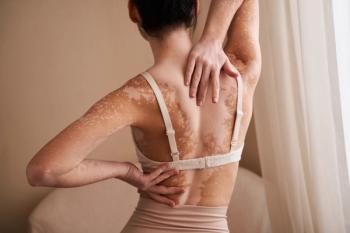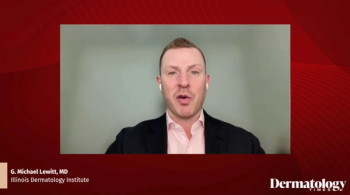
Platelet-Rich Plasma May Be Effective as a Therapeutic Option For Vitiligo
PRP is both safe and effective and may be used as a therapeutic option or alternative in conditions like vitiligo or in wound healing.
Platelet-rich plasma (PRP) is both safe and effective, either as an adjunct therapeutic or alternative therapeutic option for patients with conditions like vitiligo, according to a recent systematic review and meta-analysis1 published in Skin Research and Technology.
Investigators Wang et al sought to explore the safety and efficacy of PRP in the treatment of vitiligo and in chronic wound healing. They noted that the effects of PRP have been explored in these indications in recent years, but lack as much research as other dermatologic indications.
Data was collected from several electronic databases, including the Cochrane Central Register of Controlled Trials, Embase, PubMed, and Web of Science through May 15, 2020. In addition to assessing each result, investigators also analyzed any referenced works to identify any related studies that may have been missed in the initial search.
Studies were required to involve vitiligo, chronic wounds, and explore both safety and efficacy of PRP. Studies and research were included if they were randomized controlled trials, cohort studies, case-control studies, or comparative trials involving adult patients, autologous or allogeneic PRP, placebo or other comparative treatment arm, and detailed outcomes related to wound healing completion, complications, and adverse reactions or events.
Initially, 1,016 studies and papers were identified. Upon excluding duplicate publications and those not meeting inclusion criteria, investigators were left with 42 articles to undergo full-text screening. After excluding more ineligible papers, a total of 27 studies and papers were included in the final literature assessment and data extraction.
In wound healing, for example, treatment with PRP led to a significantly increased proportion of complete wound healing when compared to a control, standard care, topical fibrinogen and thrombin, and saline dressings. Additionally, when compared to controls, PRP led to significant improvements in the percentage of wound area healed with less healing time.
In 2 studies centered around degree of improvement of vitiligo, PRP treatment led to greater degrees of improvement than a control or alternative treatment. PRP also led to greater average repigmentation than controls, with similar rates of patient satisfaction noted between both PRP and controls.
Due to the limited size of the review, investigators called for larger-scale studies, particularly randomized controlled trials, to further expand upon their findings.
“There is increasing interest in using PRP for the treatment of chronic wounds of multiple etiologies and vitiligo. This is because it contains growth factors which are thought to aid wound repair,” according to authors Wang et al. “Using meta-analysis, our results support the conclusion that PRP can effectively improve symptoms as well as accelerate wound healing with acceptable safety. Thus, it could be considered as adjunctive therapy for the chronic wounds and vitiligo.”
Reference
- Wang Z, Feng C, Chang G, Liu H, Li S. The use of platelet‐rich plasma in wound healing an vitiligo: A systematic review and meta‐analysis. Skin Res Technol. 2023;29(9).
doi:10.1111/srt.13444
Newsletter
Like what you’re reading? Subscribe to Dermatology Times for weekly updates on therapies, innovations, and real-world practice tips.

















